Bibliography & Resources
For more information about The Japanese House at the Boston Children’s Museum, Japanese design and architecture, and Japanese traditions and history, we recommend the following books, periodical articles, websites, and videos.












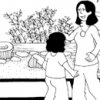
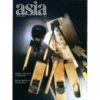









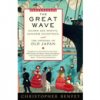



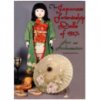




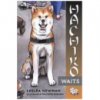









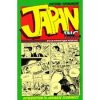








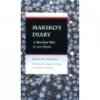




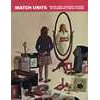














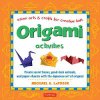



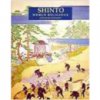
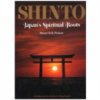







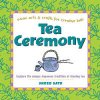















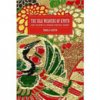


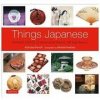






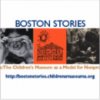
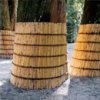




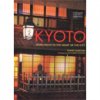

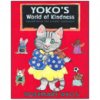

A History of Japanese Religion
A History of Japanese Religion. Ed. Kazuo Kasahara. Tokyo: Kosei Publishing Company, 2002. A comprehensive survey of Japanese religious history from experts in the field, focusing primarily on developments in Buddhism and Shinto, but also covering the history of Christianity in Japan and lesser-known sects, such as Shugendo.

A Hundred Years of Japanese Film
Richie, Donald. A Hundred Years of Japanese Film: A Concise History, with a Selective Guide to DVDs and Videos. Revised edition. New York, NY: Kodansha USA, 2012. A comprehensive history of Japanese film, covering the work of great directors such as Kurosawa as well as current trends. Includes a list of subtitled films readily available in the United States.

A Modern History of Japan
Gordon, Andrew. A Modern History of Japan: From Tokugawa Times to the Present. New York and Oxford, Oxford University Press: 2003. A canonical account of Japanese history of the 19th and 20th centuries and into the 21st. A nuanced exposition of the widespread political changes and everyday social transformations that occurred during the modernization of Japan.

A Tale for the Time Being
Ozeki, Ruth. A Tale for the Time Being. New York: Penguin Books, 2013. This novel follows Japanese-American author Ruth as she attempts to piece together the story of Nao, whose diary washed up on the shore of Ruth’s beach hometown on the west coast of Canada. Nao is a troubled teenage girl from Tokyo, who has resolved to document her hundred-year-old grandmother’s life as an activist, feminist, and Zen nun. A compelling story in and of itself, the novel also introduces Zen Buddhist philosophy and its connections to scientific theories of time and being.

A Tractate on Japanese Aesthetics
Richie, Donald. A Tractate on Japanese Aesthetics. Berkeley, CA: Stone Bridge Press, 2007. An essay in zuihitsu, “follow-the-brush” style, exploring traditional Japanese aesthetics. Touches on topics such as wabi sabi and mono no aware, as well as differences from traditional Western aesthetics.

A Year in Japan
Williamson, Kate T. A Year in Japan. New York: Princeton Architectural Press, 2006. A memoir of an American’s time in Japan, told through beautiful watercolor snapshots paired with brief “handwritten” vignettes and observations.

About Japan
Moore, Willamarie. All About Japan. Singapore: Charles E. Tuttle Co., Inc., 2011. A comprehensive book that introduces you to Japan and its culture. Two kids who live in different parts of the country take you through their everyday lives and give you a glimpse of what it is like to be in their shoes. Includes traditional stories, games, recipes and activities. Recommended for PreK-4.

About Kyoto Town Houses
Suzuki, Kakich. “About Kyoto town houses” 1979. A memo written by the director of the Architecture Division of the Agency for Cultural Affairs in Kyoto to the curator at Boston Children’s Museum describing the history of machiya in Kyoto.

About The Japanese House Opening at Boston Children’s Museum
Matchan, Linda. “A House Party Japanese Style: Children’s Museum Celebrates Opening of Its Artisan’s House.” The Boston Globe, April 17, 1980. A newspaper article about the opening of the exhibit.

Anthology of Japanese Literature (through 1870)
Anthology of Japanese Literature: From the Earliest Era to the Mid-Nineteenth Century. Compiled and ed. Donald Keene. New York, NY: Grove Press, 1955. Canonical anthology of major works of Japanese literature in translation, up until the years of the Meiji Restoration (around 1870). Includes major works such as Sei Shonogan’s The Pillow Book, The Tale of the Heike, Basho’s haiku, and works by Iharu Saikaku and Chikamatsu Monzaemon. Interspersed are essays by Donald Keene on the historical context for these works.

Architecture Review of The Japanese House
Campbell, Robert. “A Japanese House for All Ages.” The Boston Globe, August 20, 1980. The Boston Globe’s architecture critic writes about The Japanese House for the Sunday magazine.

Asia for Educators
Blueprints for The Japanese House 1
These are the actual blueprints that are used for reconstruction of the Japanese House at Boston Children’s Museum. They are designed by the Yoshimura architectural firm in Kyoto, Japan.
Blueprints for The Japanese House 10
These are the actual blueprints that are used for reconstruction of the Japanese House at Boston Children’s Museum. They are designed by the Yoshimura architectural firm in Kyoto, Japan.
Blueprints for The Japanese House 2
These are the actual blueprints that are used for reconstruction of the Japanese House at Boston Children’s Museum. They are designed by the Yoshimura architectural firm in Kyoto, Japan.
Blueprints for The Japanese House 3
These are the actual blueprints that are used for reconstruction of the Japanese House at Boston Children’s Museum. They are designed by the Yoshimura architectural firm in Kyoto, Japan.
Blueprints for The Japanese House 4
These are the actual blueprints that are used for reconstruction of the Japanese House at Boston Children’s Museum. They are designed by the Yoshimura architectural firm in Kyoto, Japan.
Blueprints for The Japanese House 5
These are the actual blueprints that are used for reconstruction of the Japanese House at Boston Children’s Museum. They are designed by the Yoshimura architectural firm in Kyoto, Japan.
Blueprints for The Japanese House 6
These are the actual blueprints that are used for reconstruction of the Japanese House at Boston Children’s Museum. They are designed by the Yoshimura architectural firm in Kyoto, Japan.
Blueprints for The Japanese House 7
These are the actual blueprints that are used for reconstruction of the Japanese House at Boston Children’s Museum. They are designed by the Yoshimura architectural firm in Kyoto, Japan.
Blueprints for The Japanese House 8
These are the actual blueprints that are used for reconstruction of the Japanese House at Boston Children’s Museum. They are designed by the Yoshimura architectural firm in Kyoto, Japan.
Blueprints for The Japanese House 9
These are the actual blueprints that are used for reconstruction of the Japanese House at Boston Children’s Museum. They are designed by the Yoshimura architectural firm in Kyoto, Japan.

Building a Bamboo Fence
Merriell, Andy. “A Japanese Fence at the Children’s Museum.” Boston: The Children’s Museum, 1973. The story of how the bamboo fence for the Japanese garden was built, told in comic-book form.

Building The Japanese House at Boston Children’s Museum
“A Japanese Roof Raising in Boston.” ASIA magazine, January-February, 1980. Describes how the 5 carpenters built The Japanese House within Boston Children’s Museum.

Buying Mittens
Nankichi, Niimi. Buying Mittens. Illus. Kuroi Ken. Trans. Judith Carol Huffman. Honolulu: University of Hawai’i Press, 1999. Picture book telling the story of a fox cub who ventures into the human village in search of mittens one cold winter night. The story explores mother-child relationships as well as transformation and discovery. Recommended for PreK-2.

Carpentry in Japan
Seike, Kiyoshi. The Art of Japanese Joinery. New York: J. Weatherhill, 1977. Describes the history and development of carpentry in Japan, with emphasis on the joinery. Includes wonderful pictures of the joinery and the wood.

Coffee Life in Japan
White, Merry. Coffee Life in Japan. Berkeley, Los Angeles, London: University of California Press, 2012. Ethnography-cum-memoir of Japanese café culture over the course of 130 years, exploring issues of gender, public spaces, urbanism, and modernity.

Cool Melons – Turn to Frogs!
Gollub, Matthew. Cool Melons – Turn to Frogs!: The Life and Poems of Issa. Illus. Kazuko G. Stone. Calligraphy by Keiko Smith. New York: Lee & Low Books Inc., 1998. Picture book weaving together the life of the celebrated haiku poet Issa (1763-1828) with his poems. Includes calligraphic renderings of the poems in Japanese alongside the illustrations. Recommended for Grades 2-5.

Correspondence about Miss Kyoto Coming to Boston Children’s Museum
Committee on World Friendship among Children. Letters from the Committee to Boston Children’s Museum about sending one of the Friendship Dolls to BCM, July 3 and July 6, 1928. Two letters, the first assigning BCM one of the dolls, the second saying it is Miss Kyoto.

Daruma
McFarland, H. Neill. Daruma: The Founder of Zen in Japanese Art and Popular Culture. Tokyo and New York: Kodansha International, 1987. This overview of the Bodhidharma, the founder of Zen Buddhism, in Japanese culture includes the historical and religious significance of Daruma (as he is known in Japan) as well as a discussion of the proliferation of Daruma imagery throughout art history, folk traditions, and popular culture.

Erika-san
Say, Allen. Erika-san. Boston: Houghton Mifflin Books for Children, 2009. Picture book relating the story of Erika, an American girl who is enchanted by her grandparents’ woodblock print of a Japanese country home, and her quest to discover that life in Japan as a young woman. Recommended for K-3rd grade.

Everyday Things in Premodern Japan
Hanley, Susan B. Everyday Things in Premodern Japan. London: University of California Press, 1997. Describes daily life in the three centuries leading up to the modern era in Japan, often comparing how things were done in Japan to Western societies as well as the rest of Asia.

Exhibition for School of Objects from Japan
Exhibition for Schools of Objects from Japan, February 19 through March 8, 1914. Flyer describing the exhibit of objects from collections of the Museum of Fine Arts, Boston, and Boston Children’s Museum arranged for school vacation week by the Women’s Education Association and displayed at the MFA.

Exploring the Boston-Japan Connection
Benfey, Christopher. The Great Wave: Gilded Age Misfits, Japanese Eccentrics, and the Opening of Old Japan. New York: Random House, 2003. Tells the story of Bostonian connoisseurs and collectors (such as Edward Sylvester Morse, Edward Fennolossa, and Isabella Stewart Gardner) who traveled and lived in Japan during the late 19th century and brought back art and artifacts along with a love of Japanese culture.

Exploring the Boston-Japan Connection: Isabella Stewart Gardner
Chong, Alan and Noriko, Murai. Journeys East: Isabella Stewart Gardner and Asia. Boston: Isabella Stewart Gardner Museum, published in association with Gutenberg Periscope Publishing, 2009. Catalog accompanying an exhibit; presents essays, photographs, and archival resources from the Gardner Museum that explore Mrs. Gardner’s interest in Japan, her trips there, and some of the objects she collected.

Exploring the Boston-Japan Connection: Museum of Fine Arts, Boston
Tomita, Kojiro. A history of the Asiatic Department: a series of illustrated lectures given in 1957. Boston: Museum of Fine Arts, 1990. Long-time curator of Asian Art Kojiro Tomita delivered a series of lectures about the history of the department and its long association with Bostonians who studied and travelled in Japan.

Film: Rebuilding an Old Japanese House
Rebuilding an Old Japanese House. Dir. Rachel Strickland. Spontaneous Cinema

Friendship Dolls
Pate, Alan Scott. The Japanese Friendship Dolls of 1927: Art as Ambassador. Available at: http://www.antiquejapanesedolls.com/pub_friendshipdolls/ADC_Friendshipdolls.html

From Old Japan
A booklet that accompanied an exhibit about Japan for children, combining selections from the collection of Boston Children’s Museum and the Museum of Fine Arts, Boston. Includes two Japanese folktales.

Gardens in Japan
Ten Grotenhuis, Elizabeth. “The White Path Crossing Two Rivers: a contemporary Japanese garden represents the past.” In Journal of Garden History, vol. 15, no. 1, January-March, 1995. Discusses the meanings and compositions of Japanese gardens.

Geisha
Dalby, Liza. Geisha. 25th anniversary ed. Berkeley and Los Angeles, CA: University of California Press, 2008. In this classic, Dalby–the first non-Japanese to ever train as a geisha (in the 1970s)–provides an insider’s exploration of the world of the geisha. She examines the history of these elite entertainers as well as the transformations and adaptations of geisha culture to modern life.

Grass Sandals: The Travels of Basho
Spivak, Dawnine. Grass Sandals: The Travels of Basho. Illus. Demi. New York: Atheneum Books for Young Readers, 1997. Illustrated story of the poet Basho (1644-1694), renowned for his haiku poetry. The story follows Basho as he travels throughout Japan looking for inspiration for his poems, and includes a selection of poems in translation and definitions of Japanese characters. Recommended for Grades 1-6.

Hachiko Waits
Newman, Leslea. Hachiko Waits. New York: Henry Holt and Company, 2004. A story about a professor’s loyal dog, who waits for him at the train station every afternoon, and continues to do so for ten years after the professor has died. Based on a true story and including a glossary of Japanese words. Recommended for Grades 3-5.

Haiku
Donegan, Patricia. Haiku: Learn to Express Yourself by Writing Poetry in the Japanese Tradition. Tokyo, Rutland, and Singapore: Tuttle Publishing, 2003. Print. Asian Arts & Crafts for Creative Kids. This book provides a background of the haiku tradition as well as activity prompts and haiku variations, such as haiga (a haiku plus a drawing). Designed for readers ages 7-12.

Hannah’s Winter
Meehan, Kierin. Hannah’s Winter. LaJolla, CA: Kane/Miller Book Publishers, 2001. During Hannah’s stay with family friends the Maekawas in Japan, she, the Maekawa daughter, and the next-door neighbor Hiro embark on an adventure to rescue the spirit of a young boy. Through riddles and supernatural encounters, Hannah becomes friends with the others and learns Japanese customs and characters, finding a connection between her family history and the ghost. A good introduction to Japan without over-simplification or cliché, recommended for grades 5-8.

Hiroshima no Pika
Maruki, Toshi. Hiroshima No Pika. New York: Lothrop, Lee & Shepard, 1980. Maruki’s watercolors and spare prose tell the story of a 7-year-old girl and her mother on August 5, 1945 and the following days. Recommended for Grades 2 and up. These paintings were exhibited at Boston Children’s Museum in 1988 (see timeline entry).

Hiroshima no Pika Exhibit
“Maruki Exhibition Opens March 8.” What’s News, Boston Children’s Museum, January 1988. Announcement describing the exhibition of Toshi Maruki watercolors from his book Hiroshima no Pika.

Hiroshima: teaching about war and peace
“Hiroshima: teaching about War and Peace.” Boston Children’s Museum, 1988. Brochure explaining and advertising the teacher seminar that the Museum presented in conjunction with the Hiroshima no Pika exhibit.

Ichiro
Inzana, Ryan. Ichiro. Boston and New York: Houghton, 2012. In this manga, Japanese-American teenager Ichiro is dragged into the realm of the gods by a mischievous tanuki while visiting his grandfather in Japan, and encounters Hachiman, the god of war. Ichiro learns of the futility and destruction that comes from “using only a finger to accuse” instead of “using our whole hand to build.” The beautifully expressive illustrations draw from Japanese folklore. Recommended for grades 8 and up.

Ikebana
Sato, Shozo. Ikebana. Tokyo, Rutland, and Singapore: Tuttle Publishing, 2004. Print. Asian Arts and Crafts for Creative Kids. Provides a background of the traditional Japanese art of ikebana, or flower arrangement, as well as detailed instructions for several variations of flower arrangements. Designed for readers ages 7-12.

In Praise of Shadows
Tanizaki, Jun’ichiro. In Praise of Shadows. Trans. Thomas Harper and Edward Seidensticker. Stony Creek: Leete’s Island Books, 1977. (Originally published in Japanese in 1933.) An essay by esteemed author and novelist Tanizaki (1886-1965) on traditional Japanese aesthetics in contrast with technological developments in interior design and Western architectural encroachment. Tanizaki describes essential Japanese design elements such as wabi sabi and mono no aware primarily in relation to Japanese architecture but also to crafts and even food.

Ivan Ramen
Orkin, Ivan with Chris Ying. Ivan Ramen: Love, Obsession, and Recipes from Tokyo’s Most Unlikely Noodle Joint. Berkely, CA: Ten Speed Press, 2013. Recipes and musings from Ivan Orkin of Ivan Ramen, the popular ramen restaurant in Tokyo run by a gaijin (foreigner) and with a new branch in New York City. Orkin describes his journey from Staten Island to the heart of the ramen scene in Tokyo, providing the only English-language glimpse into the world of ramen in Japan.

Japan, Inc.
Ishinomori, Shotaro. Japan, Inc.: Introduction to Japanese Economics. 1st ed. Berkeley and Los Angeles: University of California Press, 1988. Adaptation and translation of the manga (comic) strip on the Japanese economy that orignially ran in 1986 in the Nihon Keizai Shimbun newspaper. The stories, packed with data and charts, provide an overview of the Japanese “bubble” economy of the 1980s through the lens of a fictional company considering moving production off-shore.

Japanese Building Process
Takagi, T. The Building in Japan. Kobe, Japan: T. Takagi, 1900. Hand-colored collotypes illustrate how a house is built in Japan, with captions in English. Available on Open Library at: http://openlibrary.org/works/OL16690958W/The_building_in_Japan

Japanese Farm Food
Singleton Hachisu, Nancy. Japanese Farm Food. Kansas City, Sydney, London: Andrews McMeel Publishing, LLC, 2012. A beautiful farm-to-table cookbook from an American expat living, farming, and cooking in northern Japan. Includes an encyclopedic array of traditional recipes as well as a glossary and resources for finding Japanese ingredients abroad.

Japanese Folktales
Sakade, Florence. Japanese Children’s Favorite Stories. Singapore: Charles E. Tuttle Co., Inc., 1958. Japanese Children’s Favorite Stories is a collection of 20 famous traditional Japanese folktales. From Peach Boy to The Old Man Who Made Trees Blossom, this book has enchanting and cultural stories that are easy to read and a perfect length for bedtime stories.

Japanese Traditions
Broderick, Setsu and Willamarie Moore. Japanese Traditions: Rice Cakes, Cherry Blossoms and Matsuri: A Year of Seasonal Japanese Festivities. Illus. Setsu Broderick. Tokyo, North Clarendon, VT, and Singapore: Tuttle Publishing, 2010. Background on seasonal traditions and monthly customs from Japan, based on the author’s childhood memories. The lighthearted and busy illustrations feature cats in place of people. Recommended for all ages.

Kamishibai Man
Say, Allen. Kamishibai Man. Boston: Houghton Mifflin Company, Walter Lorraine Books, 2005. Celebrated picture book in which an elderly “kamishibai man” who ventures out of retirement one day to reflect on his former occupation as a traveling storyteller, and how television gradually came to replace kamishibai (paper theater) as a more popular form of entertainment. Recommended for K-3rd grade.

Kansai Cool
Whelan, Christal. Kansai Cool: A Journey into the Cultural Heartland of Japan. Tokyo, Rutland, Singapore: Tuttle Publishing, 2014. A selection of 25 essays by cultural anthropologist Christal Whelan concerning the Kansai region, centered around the western cities of Kyoto, Nara, Osaka, and Kobe. Topics addressed include contemporary and traditional forms of technology, fashion trends, arts movements, and the region’s relationship with nature.

Kimono
“All About Kimonos.” Boston Children’s Museum, no date. Handout prepared by the Museum to explain the parts of a kimono and how to wear it.

Kwaidan
Hearn, Lafcadio. Kwaidan: Stories and Studies of Strange Things. Boston, MA, Rutlant, VT, and Tokyo: Tuttle Publishing, 1971. A collection of Japanese ghost stories and folk tales compiled and translated by Lafcadio Hearn (1850-1904), also known as Koizumi Yakumo. Hearn was one of the first Westerners to study and write about Japanese culture. Kwaidan is his most well-known publication, and it served as the basis for the 1965 horror film of the same name by Masaki Kobayashi.

Life in Kyoto in the Early 20th Century
Nakano, Makiko. Makiko’s Diary A Merchant Wife in 1910 Kyoto. Trans. Kazuo Smith. Stanford: Stanford University Press, 1995. The diary kept by the young wife of a merchant in Kyoto, detailing everyday life with her extended family in a home that also functioned as a store, just like The Japanese House at Boston Children’s Museum.

Machiya Design
Tingley, William R. “Principal Elements of Machiya Design.” In Process Architecture #25, Japan: Climate, Space and Concept, 1981, pp. 83-102. A very thorough description of machiya design throughout Japan, including Kyoto.

Machiya in Kyoto
Takahiko, Otani. “Kyoto’s Disappearing Architectural Heritage.” In Japan Echo, October 2005, pp. 51-53. Describes the history and design of Kyoto’s machiya, and why they need to be preserved.

Match Box Final Report to Department of Education
Kresse, Frederick H. Materials and Activities for Teachers and Children: A Project to Develop and Evaluate Multi-Media Kits for Elementary Schools. Boston, MA: The Museum, 1968. Final report to the Department of Education, Project #5-0710, Contract OE-4-16-019, 2 volumes, report & appendices. Final Report on the entire 4-year MATCh box project at Boston Children’s Museum, including the process for selecting and making each box, the trial period in schools, and the evaluations of each box and what was learne

Match Box Project
“The Match Box Project.” Boston Children’s Museum. Boston, MA: The Museum, 1967. Three-page description of all of the boxes available for rental from the Museum, their contents, and their intended grade-level use.

Match Box Unit Brochure
Describes the kits available for purchase that were part of the first MATCh Box program in 1966.

Match Boxes
“Match Boxes.” American Education, December 1966–January 1967 issue, 1 page. Describes trying out the Match boxes in classrooms and what the project entailed.

Match Kit Brochure
Match Kit brochure. American Science and Engineering, Boston, 1969. Full-color brochure of all the kits available from AS&E, including photos of the contents of each box.

Millennial Monsters
Allison, Anne. Millennial Monsters: Japanese Toys and the Global Imagination. Berkeley and Los Angeles: University of California Press, 2006. Anthropologist Anne Allison examines Japanese youth culture and its increasingly global popularity, from manga to karaoke, investigating the capitalistic nature of these forms of play and the cultural exchange between Japan and the U.S. in particular.

Miss Kyoto Conservation
Conservation Process for Miss Kyoto, 1985-1986. A photo album put together by the Yoshitoku Doll Company, Tokyo, documenting the key steps in the conservation process for restoring the Miss Kyoto doll to her original condition.

Miss Kyoto Doll at Boston Children’s Museum
The True Story of Miss Kyoto. 1986. A scrapbook put together by Boston Children’s Museum telling the story of Miss Kyoto and how she came to the Museum, her conservation trip to Japan, and her return to glory at BCM. Includes information about her doll type and other Japanese dolls.

Miss Kyoto Doll Returns to Boston Children’s Museum
“Miss Kyoto Reunited with Old Friends.” What‘s News, Boston Children’s Museum, 1986. Article from the Museum newsletter describing the doll’s trip to Japan and the celebration upon her return.

MIT Visualizing Cultures
MIT Visualizing Cultures Website. Image-driven scholarship exploring different themes in Asian studies, such as the arrival of Commodore Perry in Japan, postcards from the Russo-Japanese War, and advertisements from the early 20th century. Selected essays have accompanying standards-based curriculum guides and lessons.

Modern Japanese Literature
Modern Japanese Literature: From 1868 to the Present Day. Compiled and ed. Donald Keene. New York, NY: Grove Press, 1956. Canonical anthology of major works of Japanese literature in translation, from the Meiji period (1868-1912) through the 1950s. Includes works by major authors such as Natsume Soseki and Jun’ichiro Tanizaki, as well as waka and haiku poetry from this era.

My Japanese Table
Samuels, Debra. My Japanese Table: A Lifetime of Cooking with Friends and Family. Foreword by Roy Yamaguchi. Photography by Heath Robbins. Tokyo, Rutland, Singapore: Tuttle Publishing. 2011. Cookbook with traditional and original Japanese recipes adapted for American kitchens and designed as an unintimidating introduction to cooking Japanese food. Includes anecdotes from the author’s ten years spent in Japan.

Naomi
Tanizaki, Jun’ichiro. Naomi. New York: Vintage Books, 2001. In this classic novel, originally serialized in 1924-25, Tanizaki tells the story of Joji’s infatuation with the young waitress Naomi. Naomi is considered to be a literary example of the moga, or “modern girl” — flapper-like young women of the Taisho period (1912-1926) who embraced new social freedoms, and the novel examines the early 20th century tension between rapid Westernization and traditional Japanese culture.

Ninja Attack!
Yoda, Hiroko and Matt Alt. Ninja Attack!: True Tales of Assassins, Samurai, and Outlaws. Illus. Yutaka Kondo. Tokyo, Rutland, VT, and Singapore: Tuttle Publishing, 2010. The authors of Ninja Attack! looked beyond the popular media image of the ninja to uncover historically accurate (but still thrilling) stories of real ninja and their adventures. Each individual ninja is accompanied by a manga-style drawing and other information, including photographs and retellings of their exploits. Recommended for Grades 8 and up.

Now or Never?
“Pictures: Now or Never? 9 Places to See Before They Slip Away.” National Geographic. 25 June, 2012. In their list of nine sites around the world to visit before they disappear, National Geographic included Kyoto’s machiya houses alongside Mount Kilimanjaro, the country of Bhutan, and the Dead Sea. All of the sites listed are threatened either by climate change, globalization, modernization, or a combination of forces.

Oishinbo Manga Series
Kariya, Testsu. Japanese Cuisine. Illus. Akira Hanasaki. Trans. Tesuichiro Miyaki. San Francisco: VIZ Media, LLC, 2009. Print. Oishinbo: A la Carte, 1. The first in a 100+ volume manga series originally published in Japanese starting in 1983, chronicling the efforts of journalist Yamaoka Shiro to discover dishes for an “Ultimate Menu” to be published by the Tozai Shimbun newspaper. Each volume focuses on a theme (such as rice or ramen) and includes a related recipe at the beginning of the story. Recommended for Grades 7 and up.

One Hundred Poems from the Japanese
Rexroth, Kenneth. One Hundred Poems from the Japanese. New York: New Directions, 1955. A selection of one hundred Japanese poems from traditional anthologies and other sources, translated by the American poet Kenneth Rexroth.

Origami
LaFosse, Michael G. Origami Activities. Tokyo, Rutland, and Singapore: Tuttle Publishing, 2003. Print. Asian Arts & Crafts for Creative Kids. This book provides a background of origami folding as well as a variety of origami activity prompts. Designed for readers ages 7-12.

Perfectly Japanese
White, Merry. Perfectly Japanese: Making Families in an Era of Upheaval. Berkeley and Los Angeles, CA: University of California Press, 2002. Anthropologist Merry White explores 20th century transformations in family structure in Japan, comparing the reality with two idealized models from the Meiji and postwar periods.

Rice as Self
Ohunki-Tierney, Emiko. Rice as Self: Japanese Identities through Time. Princeton, NJ: Princeton University Press, 1993. An exploration of food and identity through the lens of the cultural and historical significance of rice to the Japanese, and how this staple food has been used as a metaphor for the construction of a national identity, particularly in opposition to other peoples.

Shin’s Tricycle
Kodama, Tatsuhara. Shin’s Tricycle. Illus. Noriyuki Ando. London: Walker Childrens, 1995. This picture book tells the true story of not quite four-year-old Shin, who was riding his prized tricycle when the atom bomb struck Hiroshima. His tricycle is on view today in the Hiroshima Peace Museum.

Shinto
Hartz, Paula R. Shinto World Religions. New York: Facts on File, Inc., 1997. Part of the World Religions series for students by Facts on File, discusses the origins and history of the Shinto religion in Japan, including festivals and rituals and its place in current Japanese society.

Shinto
Picken, Stuart D. B. Shinto Japan’s Spiritual Roots. Tokyo: Kodansha International Ltd., 1980. Describes the importance of the Shinto religion in Japan, including festivals and rituals and its place in everyday life.

Shukuten
“Tenth Anniversary Celebration for Japanese House.” What’s News, Boston Children’s Museum, January, 1991. Article describing the events surrounding the celebration of Shukuten at Boston Children’s Museum.

Shukuten Appreciation Day proclamation
Proclamation. Mayor Raymond Flynn, City of Boston. December 3, 1990.

Shukuten Invitation
Invitation, Boston Children’s Museum, 1990. The invitation to the 10th Anniversary celebration of the gift of The Japanese Museum to the City of Boston.

Shukuten Tenugui
Tenugui. Boston Children’s Museum, 1990. Handout from the Shukuten ceremony that explains what tenugui are, and shows the special designs celebrating the parties involved in the anniversary of The Japanese House developed by textile artist Yasuko Yabe for the event.

Sister City Brochure
Brochure about the Boston–Kyoto sister city relationship from 1976, with pictures of the stone lanterns given by the City of Boston to the City of Kyoto; text is in English and Japanese.

Stranger in the Mirror
Say, Allen. Stranger in the Mirror. Boston: Houghton Mifflin Company, 1995. Picture book in which 8-year-old Martin wakes up one morning shortly after his grandfather’s departure (possibly to a nursing home) to discover that he has, overnight, become an old man. The story addresses issues of appearance, insecurity, and finally acceptance. Recommended for K-3rd grade.

Tea Ceremony
“Tea Ceremony at the Children’s Museum.” Boston Children’s Museum, no date. Describes what a tea ceremony is, including the vocabulary as well as how to be a good guest and how to drink the tea correctly.

Tea Ceremony
Sato, Shozo. Tea Ceremony. Tokyo, Rutland, and Singapore: Tuttle Publishing, 2004. Print. Asian Arts and Crafts for Creative Kids. Describes the history and cultural significance of the tea ceremony, as well as providing detailed step-by-step instructions for performing a tea ceremony at home. Designed for readers ages 7-12.

Teen Tokyo Exhibit Planning
Bedford, Leslie. “Finding Common Ground.” In Curator: The Museum Journal, vol. 38, no. 1, March 1995, pp, 14-30. Describes the exhibit Teen Tokyo from the beginning: the idea, the development, the fabrication, and—most importantly—the testing and the reception.

Teen Tokyo in Boston Children’s Museum Newsletter
What’s News (Boston Children’s Museum newsletter) article on the opening of the Teen Tokyo exhibit. Includes more photos and description, as well as some statistics.

Teen Tokyo Invitation to Opening
Invitation to exhibit Teen Tokyo: Youth and Popular Culture in Japan. The foldout invitation shows the photos of the Japanese teens profiled along the wall of portraits in the exhibit.

Teen Tokyo Japanese Vocabulary
Teen Tokyo Vocabulary List, a handy list of the main Japanese words used in the exhibit, with the English definitions.

Teen Tokyo Presentation at American Association of Museums meeting
“Creating a Global Partnership: Teen Tokyo at the Children’s Museum.” American Association of Museums Annual Conference, 1993. Talks delivered by the exhibit team members during their presentation of the development of the Teen Tokyo exhibit at AAM’s annual meeting. Includes talks by Signe Hanson, Leslie Bedford, Ryoko Yamagata, Dan Spock, and Janet Kamien.

Teen Tokyo Teachers’ Guide
Teacher’s Guide to using Teenage Tokyo: the Story of Four Japanese Junior High School Students. Booklet that accompanied the manga curriculum unit for the Teen Tokyo exhibit.

Teenage Tokyo: the Story of Four Japanese Students
Duffy, Jo. Teenage Tokyo: the Story of Four Japanese Junior High School Students. Illustrated by Takashi Oguro. Presented by Boston Children’s Museum and The Japan Forum. 1992. The manga (comic book) curriculum unit that accompanied the exhibit “Teen Tokyo” designed for use in the classroom prior to visiting the exhibit.

The Art of Japanese Architecture
Young, David & Michiko. The Art of Japanese Architecture. Tokyo: Tuttle, 2007. Comprehensive overview of Japanese architectural history up through the present day. Illustrated with photographs, watercolor paintings, floor plans, and woodblock prints.

The Book of Tea
Okakura, Kakuzo. The Book of Tea. Boston: Tuttle, 2000. Illustrated Classic Edition. This book was first published in 1906 and is considered the definitive work explaining the importance of tea and the tea ceremony in Japanese culture, written during a time of increasing Westernization. This edition includes photographs by Daniel Proctor and an introduction by Liza Dalby.

The Ink-Keeper’s Apprentice
Say, Allen. The Ink-Keeper’s Apprentice. New York: Harper, 1979. An autobiographical novel by the established children’s author and illustrator, telling the story of young Kiyoi’s apprenticeship to a famous Japanese cartoonist, Noro Shinpei. Simultaneously a coming-of-age story, propelled by Kiyoi’s separation from his parents and assimilation into apprenticeship, and a more focused exploration of artistic growth, the book highlights the importance of the mentor-pupil relationship. Recommended for grades 6-8.

The Japanese Educational Challenge
White, Merry. The Japanese Educational Challenge: A Commitment to Children. New York, NY: The Free Press, 1987. Analyzes the Japanese educational system and culture in order to draw lessons and inspiration for the U.S. educational system. Of particular interest is the Japanese societal commitment to children and their education, including cultural attitudes towards both parents and teachers.
The Japanese House Glossary
Kyo no Machiya Japanese House Exhibition Glossary of Terms. PDF with images, descriptions, and Japanese pronunciation guide for architectural and cultural Japanese terms related to the exhibition.
The Japanese House Neighborhood Tour
Take a Walk to our Japanese House! PDF with a guided photographic tour of the contemporary Nishijin district of Kyoto, where The Japanese House originated.

The Just Bento Cookbook
Itoh, Makiko. The Just Bento Cookbook: Everyday Lunches To Go. New York: Kodansha USA, Inc., 2010. Cookbook from the popular bento blog www.justbento.com with recipes and tips for attractive and nutritious boxed lunches.

The Old Man Mad About Drawing
Place, Francois. The Old Man Mad About Drawing: A Tale of Hokusai. Trans. Wiliam Rodarmor. Jaffrey, NH: Godine, 2004. Illustrated biographical account of the renowned woodblock printmaker Katsushika Hokusai (1760-1849), who called himself “the old man mad about drawing,” told through the eyes of his fictional apprentice, Tojiro. Recounts the life and work of the extremely prolific Hokusai, best known for his series “The 36 Views of Mt. Fuji.” Illustrations are a combination of Hokusai’s own work and Place’s watercolors. Recommended for Grades 4 and up.

The Silk Weavers of Kyoto
Hareven, Tamara K. The Silk Weavers of Kyoto. Berkeley: University of California Press, 2002. Examines the lives of the craftspeople of the Nishijin district of Kyoto, especially the relationship of work, family, and home.

The Way We Do it in Japan
Cobb Ijima, Geneva. The Way We Do it in Japan. Illus. Paige Billin-Frye. Morton Grove, Illinois: Albert Whitman & Company, 2002. A picture book introduction to Japanese home and school life through the eyes of Gregory, a half-Japanese, half-American boy who moves to Japan with his parents when he is in elementary school and has to adjust to a different way of doing things. Recommended for PreK-3.

The Woods Used in The Japanese House
Bedford, Leslie. “Notes on the woods used in the building of the Japanese House.” Memo to BCM Staff, December 12, 1984.
Lists the many woods used in The Japanese House.

Things Japanese
Bornoff, Nicholas. Things Japanese: Everyday Objects of Exceptional Beauty and Significance. Photography by Michael Freeman. Singapore: Periplus Editions (HK) Ltd., 2002. A selection of 60 traditional, diverse Japanese objects with photos and information relation to each object’s history, cultural significance, and related customs. Objects range from works of art such as ukiyo-e to household items like furoshiki to ceremonial artifacts such as ema.

Tokyo Heist
Renn, Diana. Tokyo Heist. New York: Viking, 2012. In this YA novel, Seattle teen Violet gets drawn into an international art crime mystery. She uses her love for manga to piece together the puzzle of stolen Van Gogh drawings and a missing painting. She teams up with her half-Japanese, half-American friend and reconnects with her father as they avoid yakuza (gangsters) in Tokyo and explore traditional and contemporary elements of Japanese culture. Recommended for grades 9 and up.

Tokyo on Foot
Chavouet, Florent. Tokyo on Foot: Travels in the City’s Most Colorful Neighborhoods. Tokyo, Rutland, VT, and Singapore: Tuttle Publishing, 2009. Part memoir of the graphic artist’s time in Tokyo and part travel guide, the illustrated Tokyo on Foot provides an illustrated and humorous exploration of the city of Tokyo and its neighborhoods.

Tomo Anthology
Tomo: Friendship Through Fiction—An Anthology of Japan Teen Stories. Ed. Holly Thompson. Berkeley, California: Stone Bridge Press, 2012. An anthology of 36 stories of teens and friendship written by authors with a personal connection to Japan. Proceeds from the book go to teens affected by the March 11, 2011 tsunami in the Tohoku region of Japan. Recommended for Grades 6 and up.

Totto-chan
Kuroyanagi, Tetsuko. Totto-chan: The Little Girl at the Window. Trans. Dorothy Britton.Tokyo, New York, London: Kodansha International, 1981. A memoir by actress, host of the daily talk show “Testuko’s Room,” and UNICEF Goodwill Ambassador Tetsuko Kuroyanagi. The book describes her school-age memories from an alternative, child-centered WWII-era school. Recommended for Grades 5 and up.

Traditional Folk Arts
Cohen, Suma. How to Make Zori. Boston: Boston Children’s Museum, 1983. Handbook on how to make zori (traditional Japanese sandals) by the artist who presented a workshop and demonstration on their making as part of the Japanese Folk Arts Program at the Museum during the fall and winter of 1983-1984.

Tsukiji
Bestor, Theodore. Tsukiji: The Fish Market at the Center of the World. Berkeley and Los Angeles, CA: University of California Press, 2004. An ethnology of Tsukiji, the world’s largest fish market in Tokyo. The book examines Tsukiji in terms of its role both in Japanese culture and the global fish industry, focusing on topics from fish auctions to globalization and the endangerment of blue fin tuna to the complex social and economic interactions within the marketplace itself.

Two Models Describing Cultural Learning at Boston Children’s Museum
Bedford, Leslie and Leslie Swartz. “Cultural Learning: Two Models.” Boston Stories, Website. A discussion of how Boston Children’s Museum developed its approach to the teaching about Japan and China.

Use of Wood in Japanese Architecture
Gleason, Paul. “Works and Woods: Architecture and ecology in Japan.” Harvard Magazine, September-October, 2008. A tour of The Japanese House with Harvard associate professor Yukio Lippit, focusing on the use of various woods by Japanese builders of machiya.

Wabi Sabi
Reibstein, Mark. Wabi Sabi. Illus. Ed Young. New York and Boston: Little, Brown and Company, 2008. Picture book in which a cat named Wabi Sabi goes on a journey to discover what her name means. She consults a cat, a dog, and a bird before seeking out a wise monkey on Mt. Hiei, who helps her understand the feeling of beauty in simplicity that is wabi sabi. The prose is interwoven with translated haiku poems by master Japanese poets, and the collage illustrations also represent the wabi sabi aesthetic. Recommended for PreK-1st grade.

War Without Mercy
Dower, John W. War Without Mercy: Race and Power in the Pacific War. New York, NY: Pantheon Books, 1986. WWII historian examines the Pacific War through the lens of race, analyzing war songs, propaganda, political cartoons, and the like from both Japan and the United States.

Ways of Forgetting, Ways of Remembering
Dower, John W. Ways of Forgetting, Ways of Remembering: Japan in the Modern World. New York and London: The New Press, 2012. From Pulitzer Prize-winning Japanese historian, an examination of memory and perception in shaping Japan’s modern understanding of World War II and implications for the role of history in a modern democracy.

Where Are You Going? (Bilingual Story for Children)
Carle, Eric, and Kazuo Iwamura. Where Are You Going? To See My Friend! New York: Orchard Books, 2001. Tales from two artists, one American and one Japanese, one told from left to right from the front of the book in English, and one told from right to left from the back of the book in Japanese, that merge and celebrate in the middle. Includes essays by both artists about their collaboration. Recommended for PreK-3.

Wooden Row Houses of Kyoto
Durston, Diane. “Machinama: the Wooden Row Houses of Kyoto” in Kyoto: Seven Paths to the Heart of the City, 2002. Print. Describes the history and architecture of machiya in Kyoto.

World Monuments Fund Watch Site: Machiya Townhouses
“Current Watch Site: Machiya Townhouses.” World Monuments Fund. Information about the efforts to protect and preserve machiya in Kyoto.

Yoko’s World of Kindness
Wells, Rosemary. Yoko’s World of Kindness: Golden Rules for a Happy Classroom. New York: Hyperion Books for Children, 2005. Stories about students adjusting to the first year of school, learning academic and social skills such as how to get along with one another. Recommended for Grades K-2.
